Houseplants not only add aesthetic value to indoor spaces but also can improve the quality of the air we breathe. Indoor air can be polluted with various toxins such as benzene, formaldehyde, and trichloroethylene, which can harm our health. According to a study conducted by NASA, certain houseplants can act as natural air filters by removing these toxins from the air.

The quality of the air we breathe is important for our overall health and well-being. Poor indoor air quality can lead to respiratory problems, headaches, and fatigue. Plant air purifiers are a natural and cost-effective way to improve indoor air quality. They can remove pollutants from the air, increase humidity levels, and produce oxygen. In addition, they can have a calming effect on our minds and reduce stress levels, making them an excellent addition to any indoor space.
By choosing the right houseplants, one can create a healthier living environment. In this article, we will explore some of the best air-purifying houseplants that can help improve indoor air quality. These houseplants are not only easy to care for but also have the ability to filter out toxins such as formaldehyde, benzene, and trichloroethylene.
Benefits of Air-Purifying Houseplants
Houseplants not only add aesthetic value to a room but also provide numerous health benefits. One of the most significant benefits of air-purifying houseplants is their ability to improve indoor air quality. This section will explore some of the benefits of air-purifying houseplants in detail.
Improvement of Indoor Air Quality
Worried about the air quality in your home? Don’t stress! Adding some air-purifying houseplants can make a real difference. These green buddies are like superheroes, tackling common indoor pollutants like formaldehyde, benzene, trichloroethylene, xylene, and ammonia. NASA even did a study and found that specific houseplants can zap away up to 87% of these pesky indoor air pollutants in just 24 hours. So, why not let nature help you breathe easier at home?
Reduction of Common Indoor Pollutants
Volatile organic compounds (VOCs) are one of the most common indoor air pollutants. They are released by everyday household items such as cleaning products, paints, and furniture. Air-purifying houseplants can reduce the levels of VOCs in indoor environments. Some of the most effective VOC-absorbing plants include spider plants, peace lilies, and bamboo palms.
Contribution to Mental Health and Well-being
Air-purifying houseplants not only improve indoor air quality but also contribute to mental health and well-being. Studies have shown that indoor plants can reduce stress, anxiety, and depression. They can also improve productivity and concentration levels. Additionally, plants release oxygen and absorb carbon dioxide, which can improve the air quality and create a more comfortable living environment.
Top Houseplants for Air Purification
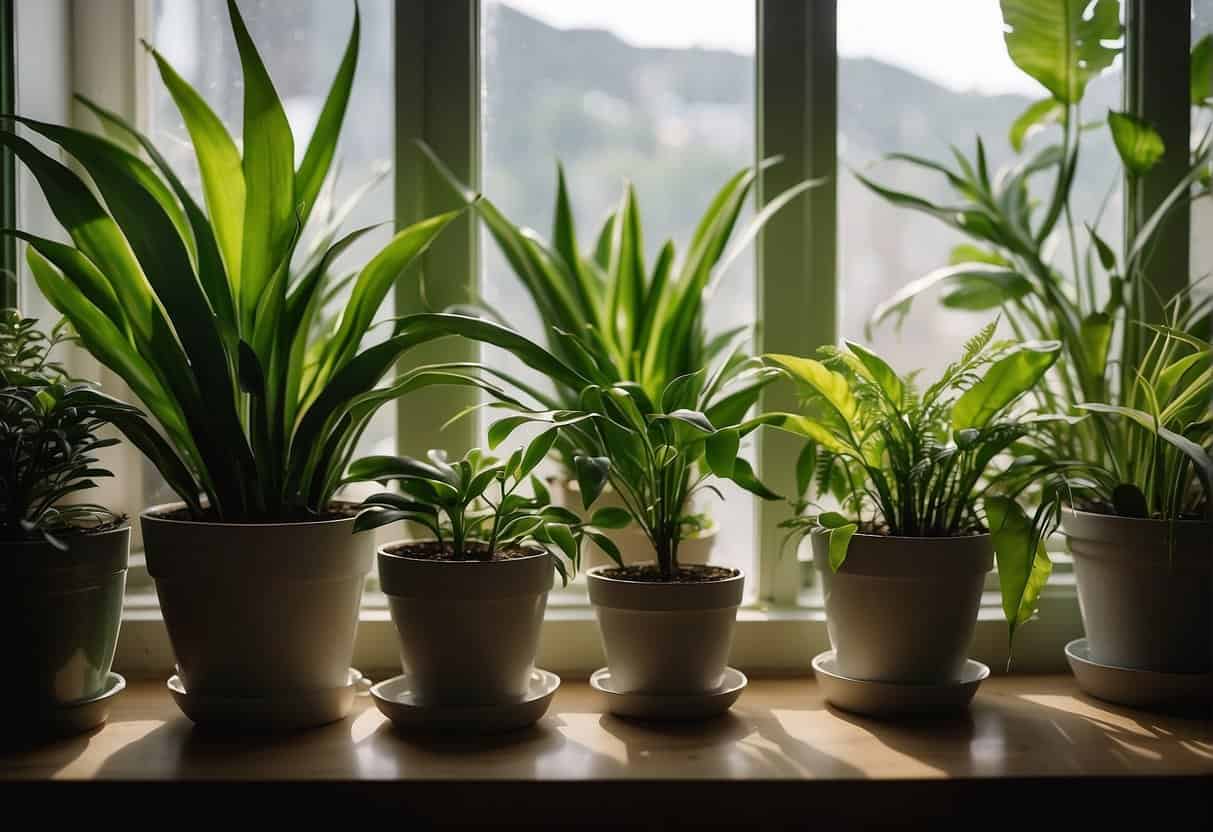
NASA Clean Air Study Overview
In the late 1980s, NASA conducted a study to determine which houseplants are most effective at removing common indoor air pollutants such as benzene, formaldehyde, and trichloroethylene. The study found that certain houseplants are excellent at purifying the air by removing these harmful toxins.
Effective Air-Purifying Plant Species
Here are some of the most effective air-purifying plant species that the NASA Clean Air Study discovered:
- Snake Plant – also known as mother-in-law’s tongue, is a low-maintenance plant excellent at removing formaldehyde from the air. It thrives in low-light conditions and doesn’t require frequent watering.
- Peace Lily – is a beautiful plant that removes benzene, formaldehyde, and trichloroethylene from the air. It prefers low to medium light and moist soil.
- Spider Plant – is a popular houseplant that removes formaldehyde and xylene from the air. It’s easy to care for and can thrive in a variety of light conditions.
- Boston Fern – is a classic houseplant that is great at removing formaldehyde from the air. It prefers bright, indirect light and moist soil.
- Aloe Vera – is a succulent plant that is excellent at removing formaldehyde from the air. It prefers bright, indirect light and well-draining soil.
Other air-purifying plants include bamboo palm, weeping fig, rubber plant, golden pothos, and Chinese evergreen. These plants are not only effective at purifying the air, but they also add beauty and a natural touch to any indoor space.
Keep in mind that even though these plants do a great job at clearing out air pollutants, they’re not the whole answer to indoor air quality issues. To really keep the air inside healthy, you’ll also need good ventilation and air filtration systems. It’s like having a team of clean-air helpers working together for a breath of fresh indoor air!
Caring for Your Air-Purifying Plants
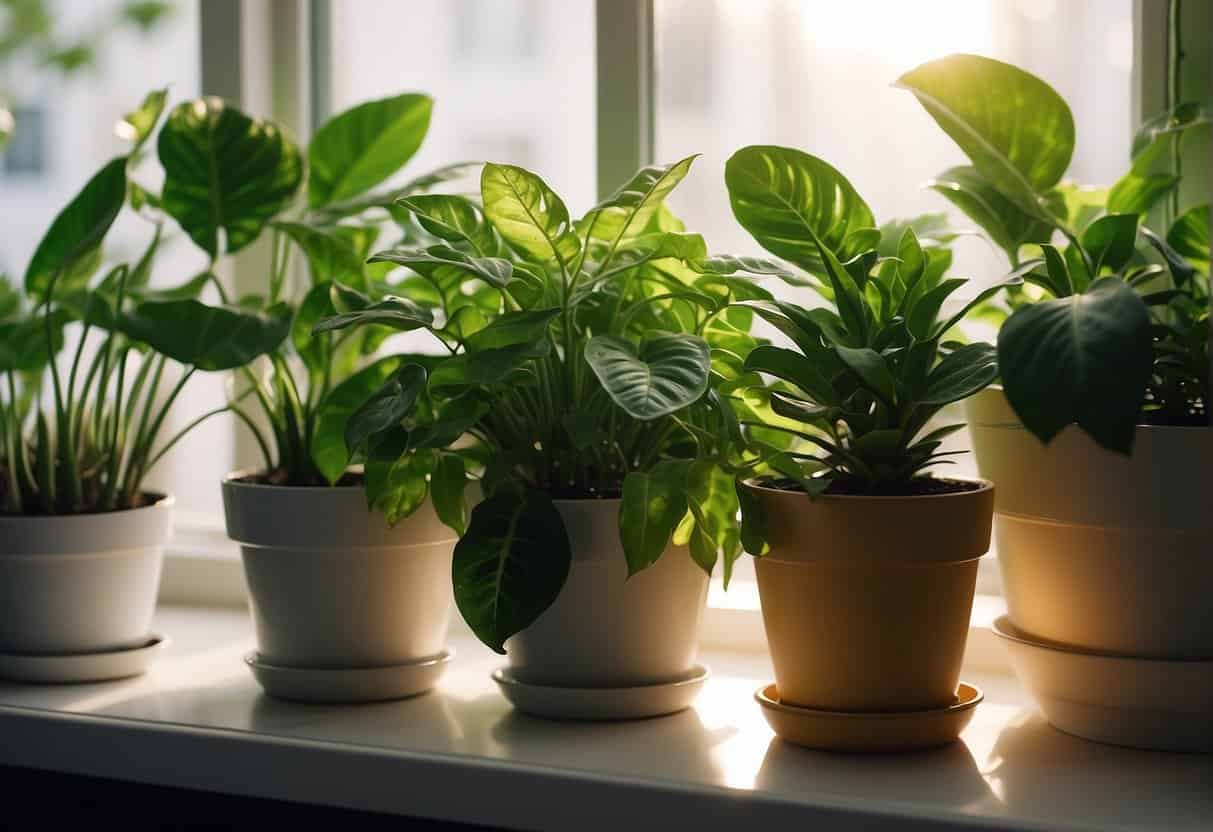
Air-purifying plants are a great addition to any home, providing both aesthetic and health benefits. To keep your plants healthy and effective in purifying the air, it is important to care for them properly. Here are some guidelines for caring for your air-purifying plants:
Light and Water Requirements
Different plants have different light and water requirements. Some plants require more sunlight than others, while some prefer indirect light. Overwatering or underwatering can also harm your plants. It is important to research the specific needs of your plants and adjust the amount of light and water accordingly.
Managing Soil and Fertilizer
Plants require a good soil mix to grow correctly. The soil should be well-draining and rich in nutrients. Fertilizers can also help provide the necessary nutrients for your plants. However, it is important not to over-fertilize, as this can harm your plants. Follow the instructions on the fertilizer package and adjust the amount of fertilizer based on the needs of your plants.
Common Pests and Diseases
Like any other plant, air-purifying plants can be susceptible to pests and diseases. Common pests include spider mites, mealybugs, and aphids. If you notice any signs of pests or diseases, it is essential to take action immediately to prevent the problem from spreading. There are several natural remedies that can be used to control pests, such as neem oil or insecticidal soap.
Considerations for Choosing the Right Plants
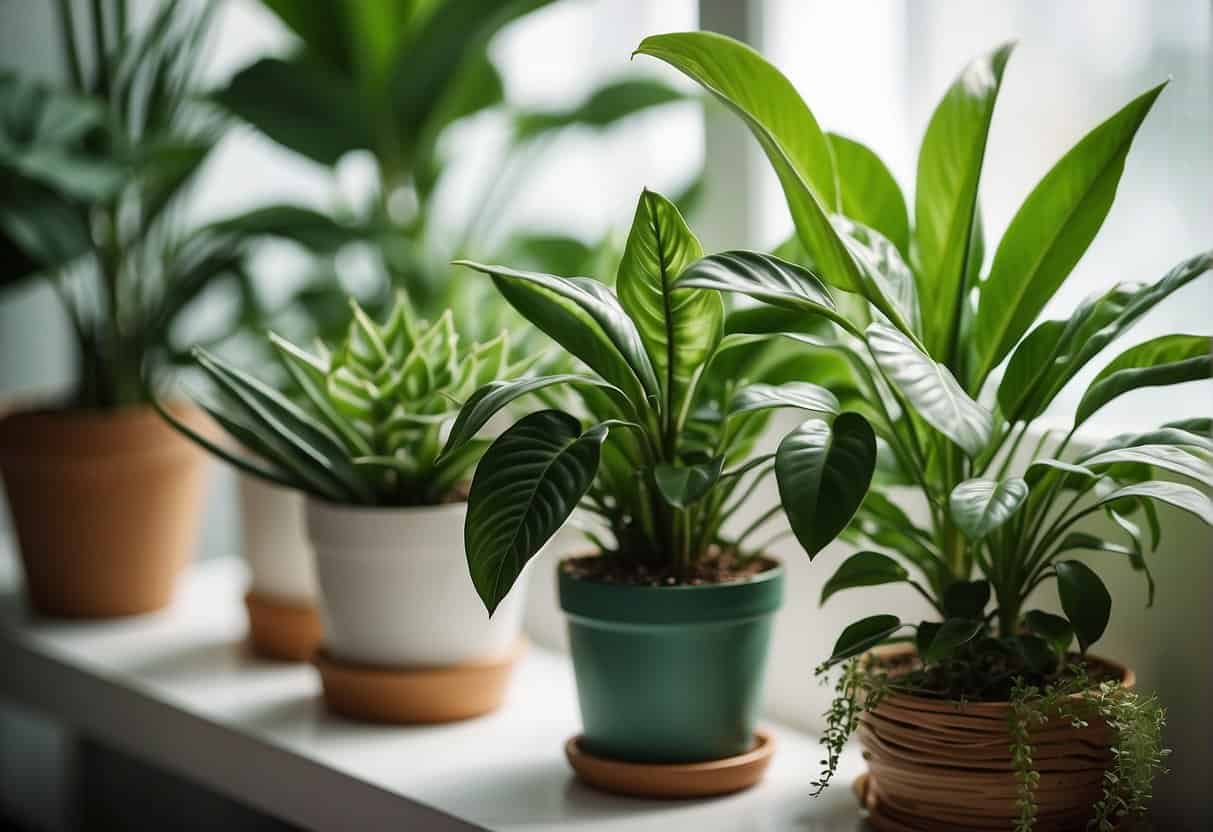
When choosing houseplants to act as natural air filters, there are several factors to consider. These include assessing your indoor environment, ensuring plant safety for pets and children, and considering the aesthetic and decorative aspects of the plants.
Assessing Your Indoor Environment
Before you go plant shopping, take a look around your indoor space. Check out how much natural light is streaming in, feel the humidity, and note the temperature. Different plants have different needs—some love lots of sunlight, while others are cool with low-light spots. And don’t forget about humidity – some plants like it moist, while others are okay with drier air. Pick plants that vibe with your indoor scene, and you’ll have happy, healthy air filters doing their thing.
Plant Safety for Pets and Children
While many houseplants can effectively filter the air, some may be toxic to pets or children if ingested. It’s important to research each plant’s toxicity level and ensure it is safe for your household. For example, the English Ivy plant is an effective air filter but can be toxic to pets if ingested. On the other hand, the Spider Plant is safe for pets and children and is also an effective air filter.
Aesthetic and Decorative Aspects
Think beyond just purifying the air – houseplants are like natural decorators for your indoor space. Check out their size, shape, color, and texture to see how they can jazz up your place. Some, like the Peace Lily, bring beautiful blooms for a burst of color, while others, like the Snake Plant, show off unique textures and patterns. Picking plants that match your style helps tie everything together, making your indoor space both healthy and easy on the eyes. So, choose wisely, and you’ll have a home that’s not just clean but also looks great!
The Role of Plants in the Larger Environmental Context
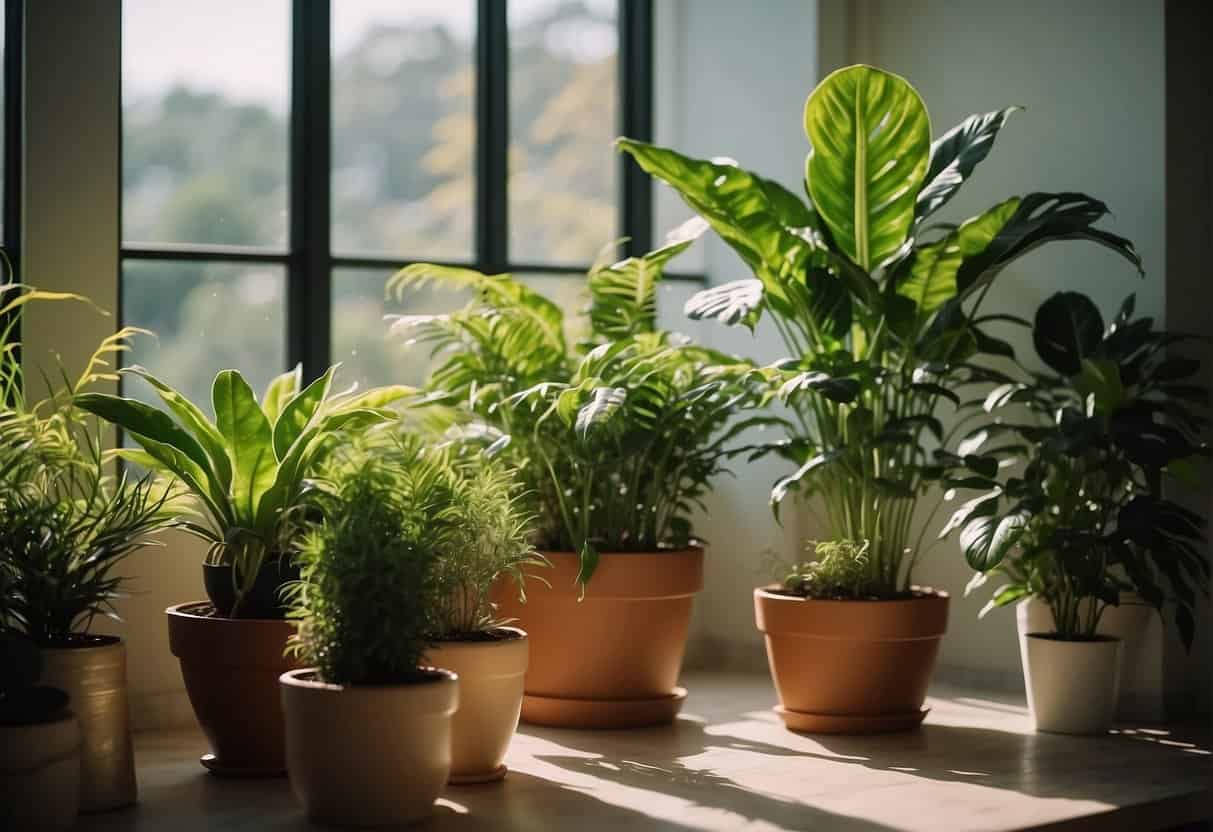
Contribution to Reducing Indoor Air Pollution
Plants play a vital role in reducing indoor air pollution. They absorb carbon dioxide and other pollutants such as formaldehyde, benzene, and trichloroethylene, which are common indoor air pollutants. In fact, NASA research has shown that some plants can remove up to 87 percent of indoor air pollutants in just 24 hours [1].
The Environmental Protection Agency (EPA) has also recognized the importance of plants in reducing indoor air pollution. The agency recommends the use of plants as a natural and cost-effective way to improve indoor air quality [2].
Plants as Natural Alternatives to Mechanical Air Purifiers
Plants are a natural alternative to mechanical air purifiers, which can be expensive and require regular maintenance. Unlike mechanical air purifiers, plants do not produce ozone, a harmful air pollutant that can cause respiratory problems.
One of the most effective plants for improving indoor air quality is the Epipremnum aureum, also known as the golden pothos. This plant is easy to care for and can remove pollutants such as formaldehyde, benzene, and carbon monoxide from the air [3].
In addition to improving indoor air quality, plants can also have a positive impact on mental health and productivity. Studies have shown that plants can reduce stress and anxiety, increase concentration and productivity, and even improve mood [4].
In summary, plants are a natural and cost-effective way to improve indoor air quality and promote a healthy living environment. They are a sustainable and eco-friendly alternative to mechanical air purifiers and can have a positive impact on both physical and mental health.
[1] https://spinoff.nasa.gov/Spinoff2019/cg_7.html
[2] https://www.epa.gov/indoor-air-quality-iaq/indoor-plants-clean-air
[3] https://www.inverse.com/science/genetically-modified-houseplant-air-purifier
[4] https://www.ncbi.nlm.nih.gov/pmc/articles/PMC4419447/
Frequently Asked Questions
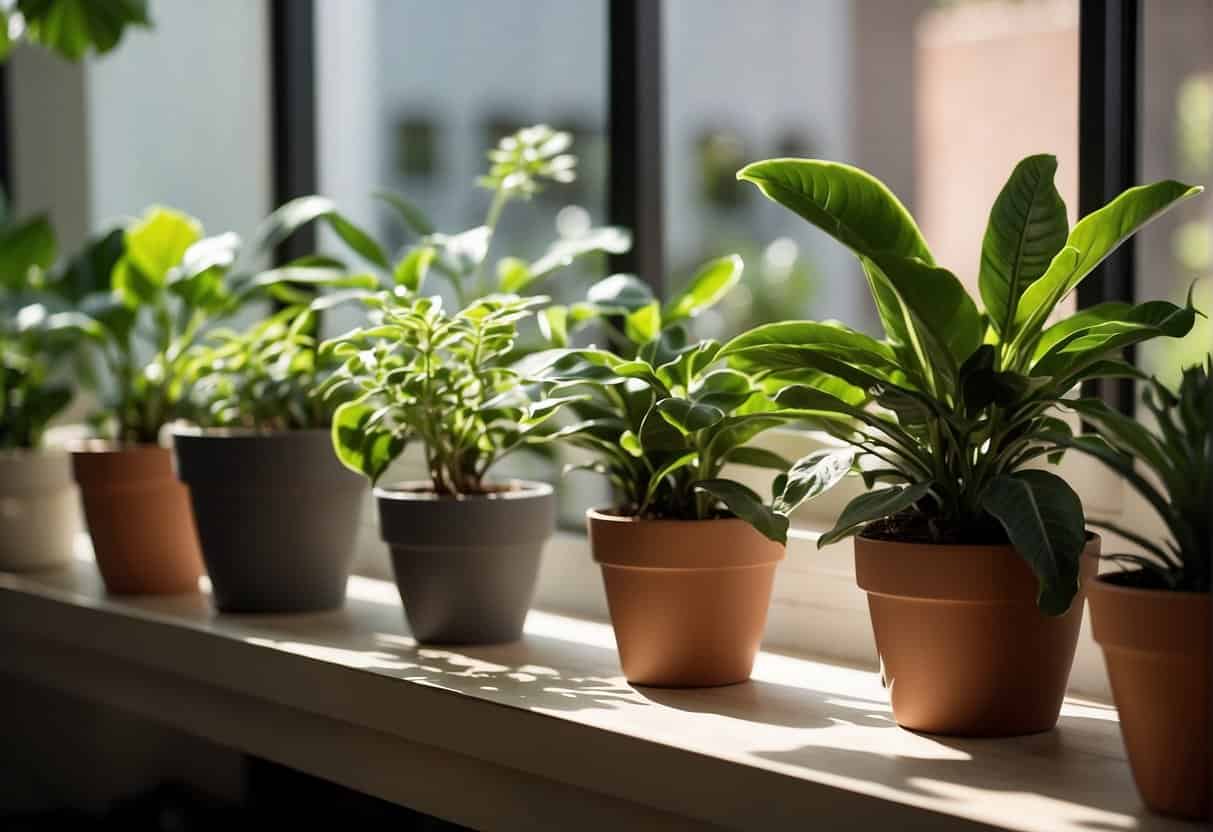
What are the top air-purifying plants recommended by NASA?
According to a study by NASA, some of the top air-purifying plants include the Spider Plant, Snake Plant, Peace Lily, and Boston Fern. These plants can help remove harmful chemicals like formaldehyde, benzene, and trichloroethylene from the air.
How do indoor plants improve air quality?
Indoor plants can improve air quality by absorbing harmful pollutants through their leaves and roots. They can also increase humidity levels in the air, which can help reduce respiratory problems.
Which low-maintenance indoor plants are best for air purification?
Some of the best low-maintenance indoor plants for air purification include the Snake Plant, Spider Plant, Aloe Vera, and Bamboo Palm. These plants are easy to care for and can help improve the air quality in your home.
Can you recommend air-purifying plants that are safe for pets?
Yes, there are several air-purifying plants that are safe for pets. Some of these include the Spider Plant, Boston Fern, and Areca Palms. However, it’s important to note that some plants can be toxic to pets, so it’s always best to do your research before bringing any new plants into your home.
What are the best plants to use in a bedroom to purify air?
Some of the best plants to use in a bedroom for air purification include the Snake Plant, Peace Lily, and Spider Plant. These plants can help remove harmful chemicals from the air and improve air quality while you sleep.
Are there any large plants that are particularly effective at filtering indoor air?
Yes, there are several large plants that are particularly effective at filtering indoor air. These include the Rubber Plant, Fiddle Leaf Fig, and Bird of Paradise. These plants can help remove harmful pollutants from the air and add a touch of greenery to your home.

